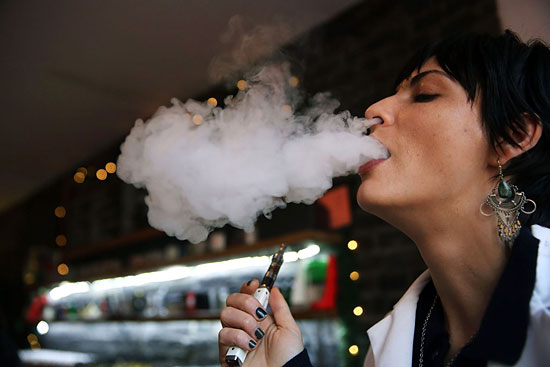Lights out for Metro e-cigs
March 26, 2014
You’re not allowed to eat your lunch, sip a soda or fire up a smoke on Metro trains and buses—and now vaping, that popular and highly controversial new pastime, has joined the no-no list, too.
Metro’s Board of Directors approved a change in the agency’s Customer Code of Conduct to make it clear that vaping or lighting up cigarettes of any type—including e-cigarettes—is not permitted in its facilities, vehicles or within 20 feet of entrances. Vapers could be kicked off the train or bus and fined $75—although they may be able to reduce that or avoid it altogether by taking online “transit school” or performing community service.
A staff report, by Julie Chang, the principal hearing officer in Metro’s transit court, said the action is part of a national trend.
“Our research indicates that municipalities locally and across the nation are all restricting e-cigarettes in a manner consistent with other smoking activities, such as cigarettes and cigars,” the report said.
Those include the Los Angeles City Council, which recently voted to ban vaping in bars, nightclubs and restaurants. Restrictions are also in place in cities including Boston, Chicago and New York.
Metro decided to tackle the issue after members of the public and law enforcement agencies asked for a clarification of the agency’s e-cigarette policy. But even before an official code change was enacted, some riders have assumed that onboard vaping is verboten—and are calling out e-smokers accordingly.
“You can’t do that on the train,” one Red Line passenger angrily told another as the man exhaled vapor from his e-cigarette on a recent morning.
The vaping passenger insisted he was allowed to light up, but stopped smoking his e-cigarette anyway. The man who confronted him left the train before the encounter could escalate.
But the broader controversy around e-cigarettes will not be extinguished that quickly.
Companies marketing the new e-cigarettes, along with boutiques peddling vaping equipment and an array of tempting-sounding flavors of liquid inserts, contend that their product is safe—and, unlike regular cigarettes, poses no second-hand smoke threat.
Public health experts and elected officials are wary, however, and say more research is needed. They’re also concerned about the potential of a new generation getting hooked on nicotine—decades after America’s smoking wars seemed settled.
Poison control officials are also alarmed by the rapid spread of vaping, pointing to a growing number of incidents in which young children have fallen ill after accidentally ingesting nicotine-infused “e-liquids” in kid-friendly flavors like bubble gum and chocolate.
In addition, a recent study casts doubt on the claim, popular among e-cigarette advocates, that vaping is an effective way to quit smoking.
E-cigarettes and specialized pipes called vape pens use a battery-charged heating element to create vapor from liquids laced with nicotine or other chemicals. The U.S. Food and Drug Administration, which does not currently regulate the product except for e-cigs marketed for “therapeutic purposes,” says that consumers should be cautious until the risks are more fully known.
Posted 3/27/14













 405 bridge work causes a stink
405 bridge work causes a stink

